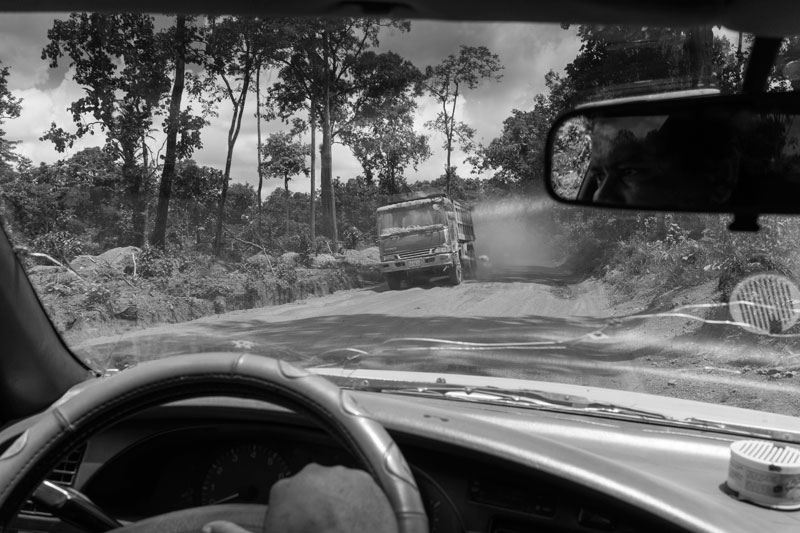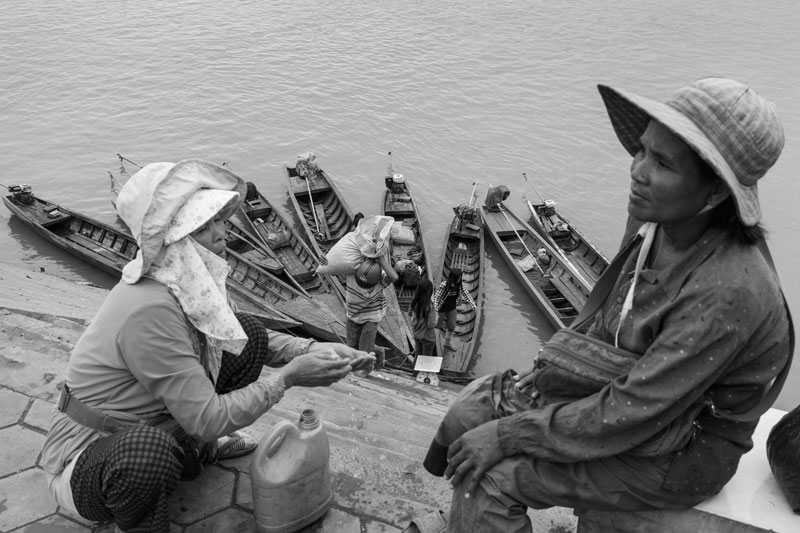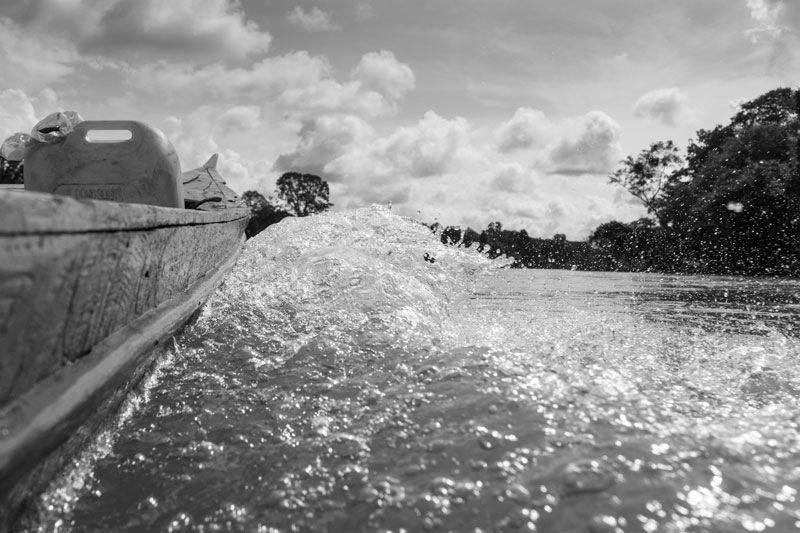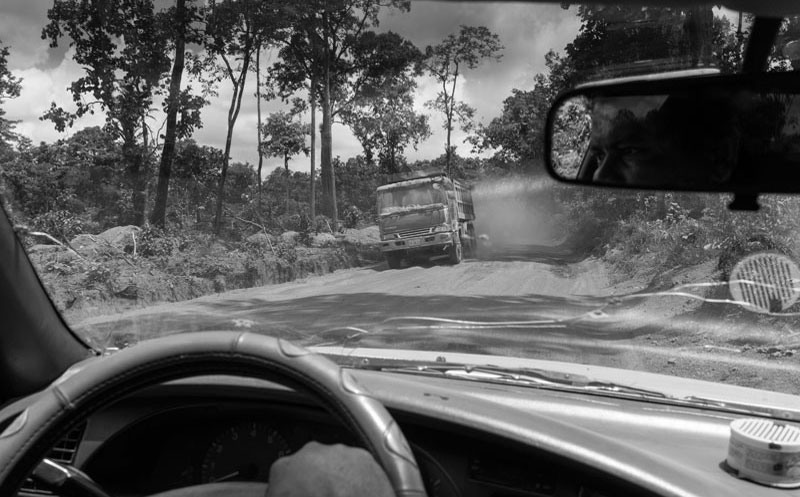On the Sesan and Srepok rivers in the northeast, boats of all shapes and sizes lug timber back and forth between the banks. Men wait on craggy land alongside the water with jerry-rigged winches and homemade vehicles to drag precious cargo up steep inclines. Fallen logs bob around in the shallows.
The timber is worth thousands.

On the roads, trucks cart industrial hauls while motorbikes with personal stashes dart from riverbank to dealer.
But these aren’t contracted deforesters. These are the people of Stung Treng’s Sesan district, and they are leveling the forests that they have lived off for centuries.
“This is the business for the local people before they have to move,” says Meach Mean, coordinator of the 3S Rivers Protection Network.
At the confluence of the rivers, the Lower Sesan 2 hydropower dam will be built. A 75-meter concrete wall will rise out of the red earth and stem the two rivers, creating a 36,000-hectare lake.

More than 5,000 people who now live in the area will have their land flooded. After months protesting the dam’s approval, many of them have taken to logging the area’s precious timber—making a buck while they can.
“It’s not that they have given up their protest, they just need to make something for themselves and their family,” said Mr. Mean, who has lobbied against the dam due to the massive impact it will have on the surrounding nature and people.
Environmental groups have said that the dam will drastically reduce fish stocks, threatening the livelihoods of some 100,000 people upstream and downstream of the dam.
This formed the basis of locals’ protest against the dam. But now, with construction underway, attention has turned to the trees, which they cut down and turn over for hundreds of dollars a cubic meter before it is sold on to the global market, fetching a hefty profit for middlemen.

“If they don’t cut the trees, they know that the company will get it all,” Mr. Mean said, referring to Royal Group, which has the contract to clear the land and build the dam together with a Chinese partner.
“They are not happy to do it, but they have no choice.”
While some locals are making what they can off the destruction of their traditional forests, others are working for the company, carrying out the labor that will eventually wash away their homes.
Some detonate explosives, blasting holes in the red earth. Others shovel the sediment into trailers to be carted off to a quarry.

But with dollars scarce and the future uncertain, the people are doing what they must to ensure their survival. New motorbikes, satellite dishes and an abundance of smartphones are evidence of the money that has been injected recently into the pockets of locals.
Dusty gravel roads linking giant metal hangars amid falling forests are the tradeoff. And at the end of the road is an oasis.
A giant body of water that will spin turbines and create power long after the people of the Sesan and Srekor have moved on.




